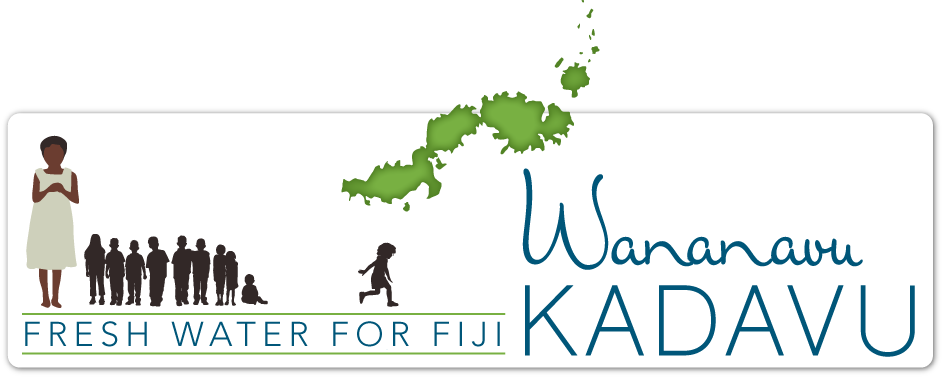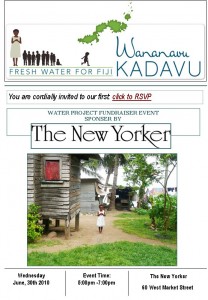Water Needs- Fiji Times September 16, 2010
 Wednesday, September 15, 2010 at 9:45PM
Wednesday, September 15, 2010 at 9:45PM 
WATER is a vital resource for the survival of mankind and other species and its scarcity is becoming a major concern for most countries in the world.
The planet's world water budget reveals that 97 per cent of water by volume is found in the oceans and is too salty for drinking, irrigation or for industry (other than coolant).
The remaining 3 per cent is fresh water.
Unfortunately, of this, 2.997 per cent is locked up in ice caps or glaciers or is buried so deep that it costs too much to extract.
This leaves us with only 0.003 per cent on which six billion human beings and millions of other organisms survive.
Environmentalists say with the increase in population, irrigation and industrialisation, shortages will intensify and water wars are likely to erupt. African countries which depend on river Nile are already experiencing tension over the river and its usage.
It is getting clearer now that the next war in the world may not be over land or oil but over water. Environmental changes is causing changes in rainfall patterns and disrupting water supplies in sometimes unpredictable ways.
About 2.4 billion people today live in "water-stressed" countries such as China, according to a 2009 report by the Pacific Institute, an Oakland, California-based nonprofit scientific research group.
Water scarcity and pollution reduce China's gross domestic product by about 2.3 per cent, according to the World Bank in a 2007 report.
China's 1.33 billion people each have 2117 cubic metres of water available per year, compared with 1614 cubic metres in India and as much as 9,943 cubic metres in the United States, according to the Food and Agriculture Organisation of the United Nations.
The 1.2 billion people in India, where farmers use 80 per cent of available water, will exhaust their fresh-water supplies by 2050 at the current rate, as estimated by the World Bank.
Reports even say that since the 1970s, water scarcity intensified by prolonged drought has killed more than 24,000 people annually and created many environmental refugees.
A 1995 World Bank study says 30 countries containing 40 per cent of the world's population now experience chronic water shortages that threaten their agriculture and industry and the health of their people.
The study says that by 2025, at least three billion people in 90 countries are expected to face severe water stress and in most of these countries, the problem is not a shortage of water but the wasteful and unsustainable use of normally available supplies. Each leaky tap can cause up to 5000 litres of water wastage each year.
The amount of water going to waste through leaky taps, pipes and fire hydrants goes unnoticed or is passed off as a minor leak but little do people realise the impact it creates on other people's water needs.
Reliance on unsafe water source contributes to waterborne diseases which becomes costly on health ministry to tackle.
Diseases quickly spread when people drink contaminated water. Industrial and human waste damage stream and river water.
The World Health Organisation recommends a coliform bacteria count of 0 colonies per 100 millilitres for drinking water.
Since the average human excretes about two billion such organisms a day, we can see how easily untreated sewage can contaminate water. Poor quality water is the key cause of poor livelihood and health. Drought makes it more critical.
1997-1998 drought
The 1997-98 drought in Fiji was the most catastrophic compared to any flood or tropical cyclone experienced by Fiji. It caused a 5 per cent decrease in sugar cane crop, though from those that remained, 25 per cent were wiped out.
It caused an estimated loss of $104 million. A SOPAC report highlighted that 77 per cent of cane farmers received less income and 33 per cent received nothing during the drought and that average farm dependent family incomes dropped from $3500 to $1500 and below.
The DISMAC report on 1997-98 drought of the Western Division revealed that there were 260 cases of infantile diarrhea and 8293 cases of influenza between January and September 1998.
There was also a high risk of dengue fever transmission. Malnutrition mainly in rural areas was also prevalent.
Drought significantly affected supply and production of fresh local food. Parents couldn't afford to buy as prices of vegetables and fresh food increased. Victims depended of tinned and processed food.
This dependency is common during natural disasters. DISMAC also reported that 47 schools in the western division were affected by water supply.
These schools also recorded low attendance as parents could not afford to send children to school.
Some schools offered meals to students. The UNOCHA in its report highighted that a total of 137 schools were identified as worst hit in drought stricken areas.
Mamanuca and Yasawas also experienced water shortage as water source dried up. Bush fires damaged the forest and grassland ecosystem. Careless burning during drought prevents successful ecological succession.
The socio-economic problems continued to affect victims until situation normalised.
People need to understand the concept and mechanism of 'green development' which is regarded as one of the best ways of overcoming environmental change that is affecting the world.
Recently, many areas in Fiji have experienced water cuts and intermittent supplies.
There are two problems here; one is water stress because of the growing urban population, which has affected water pressure and water supplies to the ever growing homes especially in urban centers.
The other is poor water management, planning and governance mainly in the last decade.
These problems are aggravated by natural variability and adverse environmental conditions.
Recommendations for development
The 1997-98 hydrological drought in Fiji taught many lessons.
Recommendations were made and needs were identified on ways to overcome water scarcity.
One of the recommendations of the DISMAC was the consideration for the provision of $1.3million to implement 66 borehole projects covering 4000 households with a population of around 21,058. The other was desalination plant for Mamanuca, Yasawa and Vatulele. It will be good to know if all these projects were implemented then as it impacts on social and economic development.
Surely small islands in the Pacific are economically poor but these issues are far more important for the wellbeing of people than anything. SOPAC also identified various needs for various sectors. Among those were introducing irrigation to intensify production in some suitable areas, supply vegetable seeds on a food for labour basis, address long term food supply issues of malnutrition and anemia, re-develop education and awareness programs targeted at food security, establish databases and disaster management plans. For the education sector, it identified the need to develop adequate water supply and storage systems.
If little was done in the last eight years since 1998 then it reflects a governance issue. It requires strong willpower of the state to tackle these issues head on and not leave it to bypass us as it seemed to have been done in the past.
If past recommendations in reports were not implemented after the 1998 disaster, then it will ultimately haunt the nation later as it is doing now.
Reports hold no value if crucial recommendations are not considered.
A huge amount of money is spent on ration distribution and relief water supplies and a developing nation like Fiji cannot afford to spend big on this. No doubt, some organisations get rich as they become the sole suppliers of relief items. The nation can cut down on this cost if plans are implemented at national level to overcome natural disasters. A household database of Fiji will enable easy and quick access to the number of people affected and the amount and type of assistance required.
It will cut down on rehabilitation time. I am certain that the current government has the will power and capability to work in that direction.
* The views expressed are not of this newspaper but of Pradeep C Lal. He can be contacted via email on the address
 "Fiji Times",
"Fiji Times",  Agriculture,
Agriculture,  Bacteria,
Bacteria,  DISMAC,
DISMAC,  Drought,
Drought,  Fiji,
Fiji,  Health,
Health,  Livelihood,
Livelihood,  Needs,
Needs,  SOPAC,
SOPAC,  Supplies,
Supplies,  Unsustainable,
Unsustainable,  Wasteful,
Wasteful,  Water in
Water in  The Water Needs in Fiji
The Water Needs in Fiji 





















